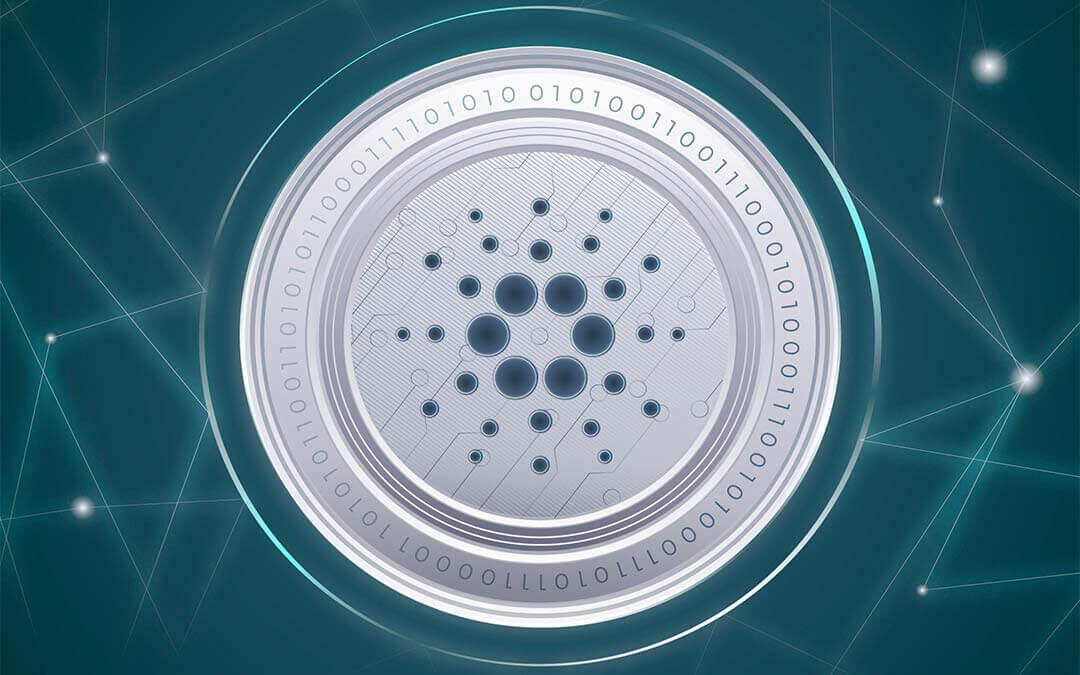Table of Contents
With this article, we will analyze in detail the Byron phase of Cardano. If, on the other hand, you want to learn more about the other phases, you can find the articles below:
The Cardano roadmap: dedicated article to learn more about the roadmap
Byron phase: it’s time for networking with the creation of the connected token.
Shelley phase: involves the development, growth, and decentralization of the network.
Basho phase: a phase of the roadmap in which the optimization of network processes will be carried out, offering greater scalability and speed in transactions.
Voltaire phase: the governance of Cardano will be developed with complete self-sustainability in the network from both a technological and an economic point of view.
Introduction to Cardano’s Roadmap and the Goguen Era
Cardano is a third-generation blockchain platform founded in 2015 by Charles Hoskinson, one of Ethereum’s co-founders. Built on scientific principles and peer-reviewed research, Cardano aims to provide a highly secure and scalable environment for decentralized applications (DApps). The Goguen phase is the third era in Cardano’s roadmap, following Byron and Shelley, and is specifically focused on enabling smart contracts, creating native assets, and paving the way for decentralized finance (DeFi).
This article breaks down the technical evolution of the Goguen phase, from critical hard forks to significant upgrades, providing a chronological overview of Cardano’s transformation.
A Chronological Overview of Key Hard Forks and Upgrades
Each hard fork in the Goguen era represents a major milestone, expanding Cardano’s capabilities in preparation for DeFi and enterprise-level applications.
Shelley Era (2020): Building Decentralization
While technically preceding Goguen, the Shelley upgrade was critical in preparing the platform for the functionality that Goguen would bring. Released in July 2020, Shelley introduced Ouroboros Praos, a proof-of-stake protocol enabling decentralization through community-operated stake pools. Shelley marked Cardano’s shift from a federated network to a community-led one, an essential step before integrating more advanced features.
Allegra Hard Fork (December 2020): Introducing Token Locking
The Allegra upgrade introduced a feature known as token locking. This capability allowed users to lock their ADA tokens within a specific transaction, an essential function for governance as it enabled users to vote on proposals by locking tokens temporarily. Token locking established the foundation for future smart contracts and governance mechanisms, allowing Cardano to manage voting rights more effectively.
Mary Hard Fork (March 2021): Multi-Asset Ledger and Native Tokens
Mary was a major milestone that introduced multi-asset support, making Cardano a true multi-asset ledger. This upgrade allowed users to create custom tokens directly on the Cardano blockchain, providing similar functionality to Ethereum’s ERC-20 standard but with crucial differences: Cardano’s native tokens don’t require smart contracts to operate. This results in fewer transaction fees and greater security, as tokens are treated as “first-class citizens” alongside Cardano’s native ADA cryptocurrency. Mary’s impact can be seen in applications such as NFTs, stablecoins, and tokenized assets, all vital to DeFi.
Alonso Hard Fork (September 2021): Enabling Smart Contracts
The Alonso upgrade was the most significant milestone in the Goguen phase, as it enabled full smart contract functionality on Cardano. With Alonso, developers can deploy decentralized applications, unlocking new use cases for Cardano and positioning it as a strong competitor in the DeFi space. This hard fork activated Plutus, Cardano’s custom-built smart contract platform, and laid the groundwork for DeFi services such as decentralized exchanges, lending platforms, and liquidity pools.
Technical Foundations of Goguen: Plutus, Marlowe, and the Multi-Asset Ledger
Goguen brought several innovative technologies to Cardano, each playing a unique role in establishing a secure and efficient smart contract ecosystem.
Plutus: Cardano’s Custom-Built Smart Contract Platform
Plutus is a smart contract platform built specifically for Cardano, based on the Haskell programming language. Haskell’s functional approach emphasizes security, predictability, and formal verification, making it ideal for financial applications where errors can be costly. Plutus consists of two main components:
- Plutus Core: This is the on-chain element of Plutus, executing smart contracts directly on the Cardano blockchain.
- Plutus Application Backend (PAB): A framework enabling off-chain interactions, allowing smart contracts to interact with users and other blockchain components securely.
Together, these components allow developers to create and deploy smart contracts with strong guarantees against vulnerabilities. Plutus’s structure supports a wide range of financial applications, from stablecoins to decentralized exchanges, adding flexibility and robustness to Cardano’s ecosystem.
Marlowe: Simplifying Financial Contracts for Non-Programmers
Marlowe is a domain-specific language (DSL) designed for creating financial contracts. Unlike Plutus, Marlowe is intended to be accessible to users with minimal programming experience. It features a drag-and-drop interface and a set of pre-built templates for common financial agreements, making it ideal for non-programmers in the financial sector.
Marlowe also includes static contract analysis, allowing developers to simulate contract outcomes before deployment. This feature is particularly valuable in the financial industry, where understanding contract behavior is crucial. Marlowe’s design allows users to create contracts for loans, insurance, and escrow arrangements, making financial transactions on Cardano accessible and secure.
Multi-Asset Ledger: Efficient Token Management
The multi-asset ledger introduced with Mary supports native tokens alongside ADA without requiring smart contracts. This architecture streamlines the process of creating and managing tokens, resulting in lower transaction costs and fewer security risks. By making tokens “first-class citizens” on the network, Cardano provides a seamless experience for developers and users, enabling tokenized ecosystems for gaming, finance, and supply chain management.
KEVM and IELE: Expanding Smart Contract Interoperability
Cardano has also introduced KEVM, a formally verified version of the Ethereum Virtual Machine (EVM), enabling interoperability with Ethereum-based applications. This compatibility allows developers to port Ethereum contracts to Cardano with minimal modification. Additionally, IELE, a virtual machine for compiling smart contracts from multiple languages, further extends Cardano’s flexibility and security.
Cardano’s Ouroboros Consensus Mechanism: Securing the Network
Ouroboros, Cardano’s proof-of-stake consensus mechanism, is central to the platform’s security and scalability. Unlike proof-of-work (PoW) protocols, which rely on high-energy computations, Ouroboros selects block producers based on the amount of ADA they hold, making it energy-efficient and secure. Ouroboros operates in epochs, with each epoch divided into slots. Slot leaders are chosen randomly, weighted by their ADA stake, ensuring decentralization and security.
Epoch Structure and Slot Leaders
Each epoch in Ouroboros lasts five days and is divided into smaller time slots. Slot leaders are responsible for verifying transactions and adding blocks to the chain during these slots. The higher the ADA stake, the higher the probability of being selected as a slot leader, incentivizing stakeholders to participate in securing the network. This structure, combined with Cardano’s focus on peer-reviewed research, ensures the protocol’s robustness and efficiency.
Decentralized Finance and Cardano’s Strategic Position in DeFi
With the completion of the Goguen era, Cardano has established itself as a strong contender in the DeFi sector. The combination of Plutus, Marlowe, and the multi-asset ledger provides a comprehensive toolkit for creating DeFi applications on a secure, scalable platform. Key use cases include:
- Lending and Borrowing Platforms: Cardano’s secure environment and low fees make it suitable for DeFi applications such as decentralized lending protocols, which rely on smart contracts to facilitate transactions without intermediaries.
- Decentralized Exchanges (DEXs): The multi-asset ledger enables efficient token exchanges on DEXs, a cornerstone of the DeFi ecosystem.
- Liquidity Pools and Yield Farming: Cardano’s efficient token system and secure smart contract platform allow for liquidity provision and yield farming, opening new investment opportunities for ADA holders.
Project Catalyst: A Decentralized Innovation Fund
Project Catalyst, Cardano’s decentralized innovation fund, allows ADA holders to propose and vote on projects that contribute to the Cardano ecosystem. This initiative represents a precursor to the upcoming Voltaire phase, which will introduce governance features to further decentralize Cardano’s decision-making processes.
Through Catalyst, the community has the power to shape Cardano’s future development, ensuring that the platform evolves in response to user needs. Funded projects range from DeFi protocols to educational resources, fostering a vibrant ecosystem of innovation.
The Goguen era represents a transformative period for Cardano, introducing key technologies that enable smart contracts, native token support, and a comprehensive toolkit for DeFi. Through a series of carefully staged hard forks—Allegra, Mary, and Alonso—Cardano has established itself as a robust platform capable of supporting mission-critical decentralized applications.
With the technical foundations laid during the Goguen phase, Cardano is well-positioned to expand further through the upcoming Basho and Voltaire phases, focused on scaling and governance. Through continued innovation and community engagement, Cardano stands as a formidable force in the blockchain ecosystem, combining rigorous security, decentralization, and scalability for the next generation of decentralized applications.
Support the project
Delegate with Pasta Pool
You may delegate even a small part of your Cardano, every contribution is precious for us.
Select [PASTA] from the staking pool list


